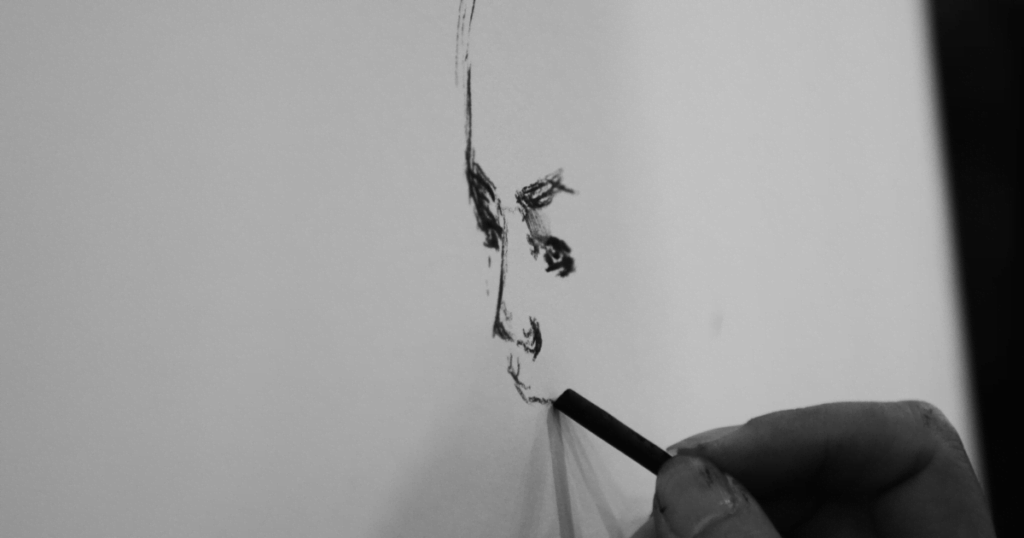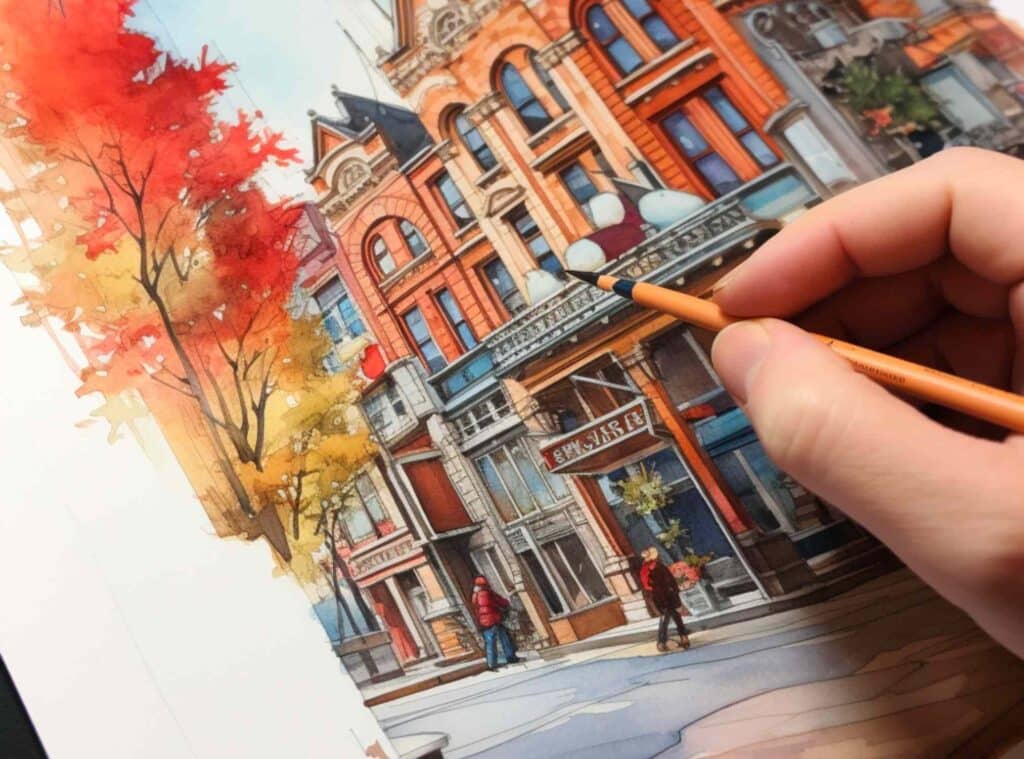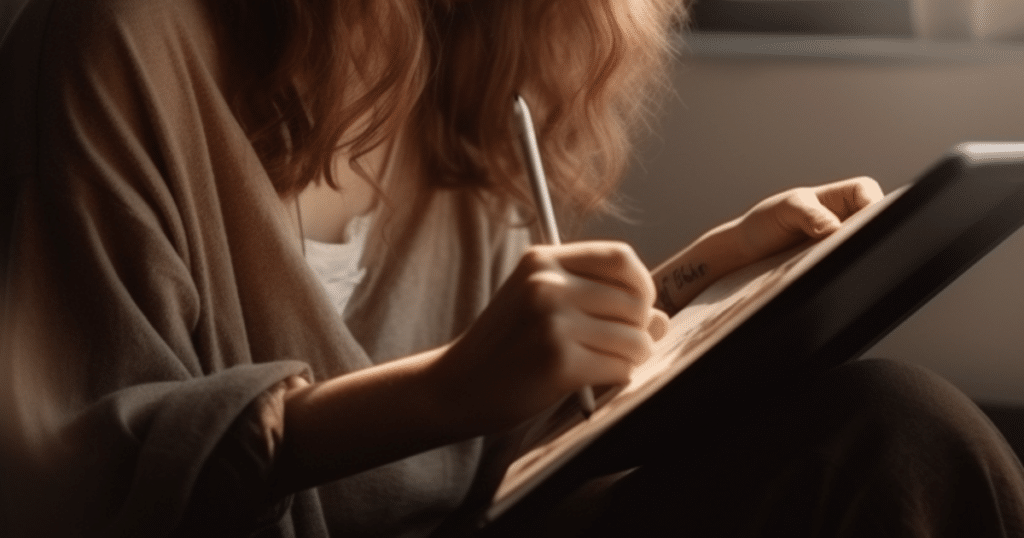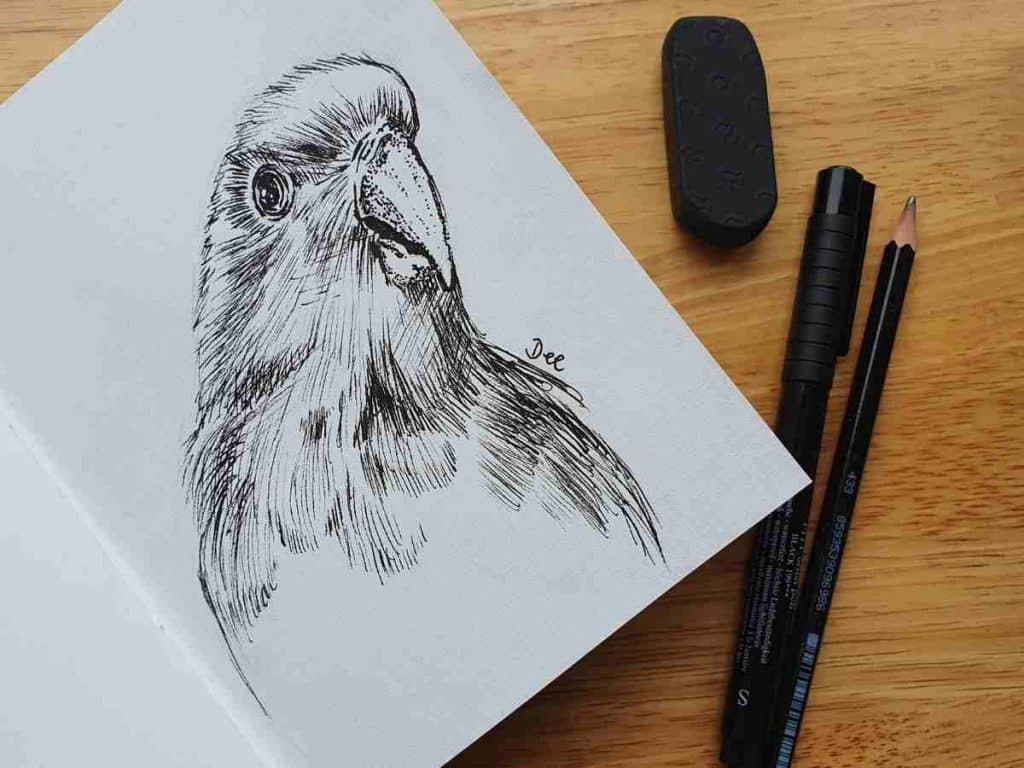Learning to draw as an adult can be a fun and rewarding experience. Whether you’re looking to pick up a new hobby or improve your artistic skills, drawing is a great way to express yourself and explore your creativity. While many people may believe that drawing is only for artists or those with natural talent, the truth is that anyone can learn how to draw with practice and dedication.
It’s never too late to start drawing, and as an adult, you have the advantage of being able to approach the learning process with a greater level of focus and maturity. By understanding the basics of drawing and choosing the right tools, you can begin to develop your skills and find your own unique style.
With so many learning resources available for adults, including online courses, books, and workshops, there’s never been a better time to start your journey into the world of art.

Key Takeaways
- Drawing is a fun and rewarding hobby that anyone can learn, regardless of their age or natural talent.
- By understanding the basics of drawing and choosing the right tools, you can begin to develop your skills and find your own unique style.
- With so many learning resources available for adults, including online courses, books, and workshops, there’s never been a better time to start your journey into the world of art.
Why It’s Never Too Late to Start Drawing
Are you an adult who has always wanted to learn how to draw but never had the chance to do so? Well, it’s never too late to start! Age is just a number, and drawing is a skill that anyone can learn and improve upon with practice and dedication. Here are some reasons why it’s never too late to start drawing:
Confidence Booster
Learning to draw can boost your confidence and self-esteem. It allows you to express yourself creatively and can be a great stress reliever. The act of drawing can also help you focus and improve your concentration skills.
Hobby and Health
Drawing is a fun hobby that you can enjoy on your own or with others. It can also have positive effects on your mental health and well-being. Studies have shown that engaging in creative activities, such as drawing, can reduce anxiety and depression symptoms.
Creativity
Drawing can help you tap into your creative side and allow you to see things from a different perspective. It can also help you develop problem-solving skills and improve your visual thinking abilities.
Adults and Age
Contrary to popular belief, age is not a barrier to learning how to draw. In fact, many adults have successfully learned how to draw and have gone on to become successful artists. It’s all about having the right mindset and being willing to put in the time and effort to improve your skills.
So, if you’ve always wanted to learn how to draw, don’t let age or lack of experience hold you back. With practice and dedication, you can develop your skills and create beautiful works of art.

Understanding the Basics of Drawing
Learning to draw as an adult can seem daunting, but it’s important to start with the basics. By understanding the fundamentals of drawing, you can build a strong foundation for your skills and develop your own unique style. Here are some essential elements to keep in mind:
Learning About Form and Perspective
Form and perspective are the building blocks of drawing. Form refers to the three-dimensional shape of an object, while perspective is the technique used to create the illusion of depth and space on a two-dimensional surface. By understanding how to create form and perspective, you can bring your drawings to life.
Mastering Composition and Space
Composition and space are important aspects of drawing that help to create balance and visual interest. Composition refers to the arrangement of elements within a drawing, while space refers to the area around and within those elements. By mastering composition and space, you can create dynamic and engaging drawings.
Understanding Edges and Relationships
Edges and relationships are key to creating a sense of realism in your drawings. Edges refer to the boundaries between objects, while relationships refer to the way objects interact with each other. By understanding how to use edges and relationships, you can create drawings that feel natural and organic.
The Importance of Detail
Detail is what brings a drawing to life. By paying attention to the small details in your drawings, you can create a sense of depth and texture that makes your work stand out. Whether you’re drawing simple shapes or complex scenes, adding detail can take your work to the next level.
Remember, learning to draw takes time and practice. By focusing on the basics and building a strong foundation, you can develop your skills and create drawings that you’re proud of.

Choosing Your Tools
When it comes to drawing, having the right tools can make all the difference. Here are some things to consider when choosing your drawing tools:
Exploring Different Pencils
Pencils are the most basic tool for drawing. There are many different types of pencils available, each with their own unique characteristics. Some of the most common types of drawing pencils include:
- Graphite pencils: These are the most common type of drawing pencil. They come in a range of hardness levels, from 9H (hard) to 9B (soft). The harder the pencil, the lighter the mark it makes.
- Charcoal pencils: These pencils are made from compressed charcoal and are great for creating dark, rich tones.
- Colored pencils: These pencils are great for adding color to your drawings. They come in a wide range of colors and can be used alone or in combination with other drawing tools.
The Role of the Eraser
An eraser is an essential tool for any artist. It allows you to make corrections and adjust your drawing as you go. When choosing an eraser, consider the following:
- Type of eraser: There are many different types of erasers available, including kneaded erasers, gum erasers, and vinyl erasers. Each type of eraser has its own unique characteristics, so it’s important to choose the one that works best for you.
- Size of eraser: The size of your eraser will depend on the size of your drawing. For larger drawings, you’ll want a larger eraser, while for smaller drawings, a smaller eraser will do.
Choosing a Sharpener
Keeping your pencils sharp is essential for creating precise lines and details in your drawings. When choosing a sharpener, consider the following:
- Type of sharpener: There are two main types of sharpeners: manual and electric. Manual sharpeners are great for on-the-go drawing, while electric sharpeners are faster and more efficient.
- Size of sharpener: If you’re using standard-sized pencils, a standard-sized sharpener will work fine. However, if you’re using larger pencils, you’ll need a larger sharpener.
By choosing the right pencils, erasers, and sharpeners, you’ll be well on your way to creating beautiful drawings as an adult.

Developing Your Drawing Skills
Learning to draw as an adult can be a rewarding experience. With the right tools and practice, you can develop your drawing skills and create beautiful artwork. Here are some tips on how to develop your drawing skills:
Starting with Sketching
Sketching is one of the best ways to start developing your drawing skills. It allows you to practice your line work, shading, and composition. You can start by sketching simple objects, such as fruits or household items, and gradually move on to more complex subjects.
When sketching, it’s important to focus on the basic shapes and forms of the object. This will help you create a solid foundation for your drawing. You can also experiment with different techniques, such as cross-hatching and stippling, to add texture and depth to your sketches.
Practicing with Still Life and Landscape
Once you have mastered the basics of sketching, you can start practicing with still life and landscape drawings. Still life drawings involve drawing objects arranged in a particular composition, while landscape drawings involve drawing natural scenery.
When drawing still life, it’s important to pay attention to the lighting and shadows. This will help you create a sense of depth and realism in your drawing. For landscape drawings, you can experiment with different techniques, such as using different brush strokes to create different textures.
Advancing to Portraits and Cityscapes

After you have practiced with still life and landscape drawings, you can move on to more advanced subjects, such as portraits and cityscapes. Portraits involve drawing people, while cityscapes involve drawing urban landscapes.
When drawing portraits, it’s important to pay attention to the proportions and features of the face. You can also experiment with different techniques, such as using different shading techniques to create a sense of depth and realism.
For cityscapes, you can experiment with different perspectives and angles. This will help you create a sense of depth and perspective in your drawing.
In conclusion, developing your drawing skills takes time and practice. Starting with sketching, practicing with still life and landscape, and advancing to portraits and cityscapes can help you develop your skills and create beautiful artwork.
Finding Inspiration and Style
One of the most exciting aspects of learning to draw as an adult is discovering your unique style. But where do you start? Here are a few tips to help you find inspiration and develop your own artistic style.
1. Explore Different Styles
Take time to explore different drawing styles. Look for inspiration in various art forms, including paintings, illustrations, and comics. Try to identify what elements you like in each style and see if you can incorporate them into your own artwork.
2. Experiment with Different Mediums
Experiment with different mediums, such as pencils, charcoal, pastels, or ink. Each medium has its unique characteristics, and trying them out can help you discover which one suits your style best.
3. Draw from Life
Drawing from life can help you improve your skills and develop your own style. Try drawing objects around your home, people, or landscapes. Pay attention to the details and try to capture the essence of what you see.
4. Find Drawing Ideas for Adults
If you’re struggling to come up with ideas, there are plenty of resources available online. Look for drawing prompts or challenges that can help you get started. You can also join online communities of artists to share your work and get feedback.
5. Embrace Your Creativity
Don’t be afraid to experiment and take risks with your artwork. Embrace your creativity and let it guide you. Remember, there are no rules when it comes to art, and your unique style is what makes your work special.
In conclusion, finding inspiration and developing your own style is a crucial part of learning to draw as an adult. By exploring different styles, experimenting with different mediums, drawing from life, finding drawing ideas, and embracing your creativity, you can discover your own unique artistic voice.
Embracing the Journey: Tips to Overcome Fear of Failure as an Adult Artist
- Normalize Mistakes: Recognize that mistakes are an integral part of the learning process. Every misshapen sketch or not-so-straight line is a stepping stone to your next masterpiece. The more you practice, the better you’ll get. Remember, it’s progress, not perfection, that matters.
- Adopt a Growth Mindset: View every setback as an opportunity for growth rather than a reflection of your inability. This is what’s known as a ‘growth mindset,’ and it’s a powerful tool in overcoming fear of failure. In the realm of art, every failure brings you one step closer to success.
- Start Small and Celebrate Progress: Set small, achievable goals to help build your confidence. It could be as simple as drawing a straight line, a perfect circle, or even mastering the shading of an apple. Celebrating these small victories can provide a significant confidence boost and motivate you to take on more challenging projects.
- Find Your Art Community: Connect with other adult beginners or seasoned artists. This can be an in-person local art class or an online community. Shared experiences can alleviate fears, provide inspiration, and offer constructive feedback. Remember, everyone’s art journey is unique and having supportive companions along the way can be a major morale booster.
- Practice Mindfulness: Engage in mindfulness practices such as meditation and deep-breathing exercises. These can help to reduce anxiety, quiet your inner critic, and allow you to enjoy the process of creation more fully.
- Make Time for Art: Incorporate art into your daily routine. This regularity decreases the pressure of each individual session being ‘perfect’ and helps to create a habit where practicing feels natural.
- Create for Yourself: Don’t get caught up in the need for approval. Create art for yourself, not for others. When you create with the intention of pleasing yourself first, it frees you from the fear of judgment and allows your creativity to flow more freely.
- Educate Yourself: Knowledge is power. The more you understand about the techniques and history of art, the less intimidating it becomes. Use resources such as books, online tutorials, and courses to broaden your understanding and skillset.
Overcoming fear of failure as an artist isn’t something that happens overnight, but by adopting these strategies, you can gradually transform fear into fuel for your artistic journey. Remember, every artist was once an amateur. So take a deep breath, pick up that pencil, and let your creativity soar!
Start With The Basics: The Art of Drawing Straight Lines
In any art form, the ability to draw a straight line is a basic skill that beginner artists need to master.
It might sound like a simple task, but even professional artists understand that it is often a daunting task to draw a straight line freehand.
It’s important to know that even when drawing lines seem challenging, it’s all part of the practice drawing process that every artist undergoes.
As a child, our first instinct when handed a pencil and drawing paper is to scribble. As we grow older, the journey to art school begins and so does the process of refining these basic skills.
In fact, one of the first things taught in any art school is how to draw lines. Straight lines form the basis of structure, proportions, and perspective in any art style.
If developed from a young age, this skill can evolve into an ability to draw things in detail and create stunning artwork.
However, it’s important to remember there is no age limit for learning, and adults can learn to draw straight lines just as well, if not better, than those who started young.
Drawing straight lines is not just about the act itself, it’s also about your approach to it. A seasoned artist will tell you that the key to drawing a straight line is not to look at the point where the line begins, but to where it ends.
This might seem counterintuitive at first, but with practice, it becomes second nature. So, as an aspiring artist, never shy away from going back to the basics.
Even a drawing tutorial focusing on simple lines can help you refine your technique and improve your overall skill level. So grab your drawing paper, take a deep breath, and remember – it’s the journey that makes an artist, not just the destination.
Learning Resources for Adults
Learning to draw as an adult can be challenging, but there are many resources available to help you improve your skills. Here are some of the best resources for adult learners looking to develop their drawing abilities.
Books and Online Courses
Books and online courses are a great way to learn to draw.
Some of the best drawing books for adults include “Drawing for the Absolute Beginner” by Mark and Mary Willenbrink, “The New Drawing on the Right Side of the Brain” by Betty Edwards, and “Keys to Drawing” by Bert Dodson.
These books are great for beginners and cover the fundamentals of drawing.
Online courses are another great option for adult learners. Udemy offers a variety of drawing courses, including “The Ultimate Drawing Course – Beginner to Advanced” and “Portrait Drawing Fundamentals Course.” These courses are affordable and allow you to learn at your own pace.
YouTube and Udemy
YouTube is a great resource for learning to draw. Channels like mine, Artsydee, or Draw with Jazza offer free drawing tutorials for beginners and advanced learners. These channels cover a variety of topics, including figure drawing, portrait drawing, and comic book art.
Udemy is another great resource for adult learners. The platform offers a variety of drawing courses, including “The Complete Drawing Masterclass: From Beginner to Advanced” and “The Ultimate Figure Drawing Course.” These courses are taught by professional artists and offer a structured learning experience.
Art Schools and Classes
Art schools and classes are a great way to learn to draw. Many universities and community colleges offer drawing classes for adults. Experienced artists teach these classes and provide a structured learning environment.
If you prefer a more flexible learning experience, there are also online art schools like the Academy of Art University and the New York Academy of Art. These schools offer online courses and degree programs in drawing and other art disciplines.
In conclusion, there are many resources available for adults looking to learn to draw. Whether you prefer books, online courses, or in-person classes, there is a learning resource out there that will meet your needs. With practice and dedication, you can improve your drawing skills and unlock your creativity.

The Benefits of Drawing as an Adult
Drawing is not just a fun and low-pressure hobby; it is a skill that can be cultivated and has numerous benefits for adults. Here are some of the benefits of drawing:
- Creative Outlet: Drawing can be a great way to express yourself creatively and relieve stress. It can be a relaxing and meditative activity that helps you unwind after a long day.
- Improved Problem-Solving Skills: Drawing can help you hone your problem-solving skills by forcing you out of conventional thinking patterns and into more creative solutions. Art requires flexibility and openness—invaluable qualities in any profession or hobby.
- Patience: Drawing requires patience and perseverance. It can help you develop patience and focus, which can be applied to other areas of your life.
- Perception: Drawing can help you develop your perception and observation skills. It can help you see the world differently and appreciate the beauty of everyday objects and scenes.
In addition to the above benefits, drawing can also be a great way to improve your hand-eye coordination, fine motor skills, and concentration. It can also help you develop a sense of self-awareness and boost your confidence.
Overall, learning to draw as an adult can be a rewarding and enriching experience that can have numerous positive effects on your life.

Things to remember about drawing as an adult
Learning to draw as an adult can be a rewarding and fulfilling experience. With patience, practice, and dedication, anyone can improve their drawing skills. Here are some key takeaways from this article:
- Progress takes time: Don’t be discouraged if you don’t see immediate improvement. Keep practicing, and you will see progress over time.
- Step out of your comfort zone: Don’t be afraid to try new things and experiment with different mediums. This can help you discover new techniques and styles.
- Theory is important: While practice is essential, it’s also important to learn about the theory behind drawing. This can help you understand the principles of composition, perspective, and shading.
- Videos can be helpful: There are many online resources available, including videos, tutorials, and courses, that can help you learn new techniques and improve your skills.
- Paints can add depth: While pencils are a great starting point, adding paints to your toolkit can help you add depth and dimension to your drawings.
Remember, the most important thing is to enjoy the process. Don’t worry too much about creating a masterpiece every time you sit down to draw. Instead, focus on learning and improving, and the results will come naturally.
Conclusion
Alright folks, so here’s the deal! Picking up a pencil and beginning your journey with art may feel like tiptoeing into uncharted territory. Especially as an adult, the prospect can be downright intimidating – but trust us, it’s not as scary as it seems! In fact, it’s pretty darn exciting!
Just remember, everyone starts somewhere. Even the world’s most renowned artists had to learn to draw their first straight line. So don’t worry if your lines are wobbly or your circles look more like potatoes. It’s all part of the process. And the whole “age limit” thing? Pure myth! Whether you’re 7 or 70, it’s always a good time to embrace your creativity.
Other articles you may enjoy…
Spark Creativity with 20 Nature Drawing Ideas: Unleash the Magic of Art in the Natural World
Master Your Craft: Choosing the Perfect Art Drawing Board for Your Creative Journey
The Ultimate Beginners Guide for Drawing on Black Paper with Colored Pencils
